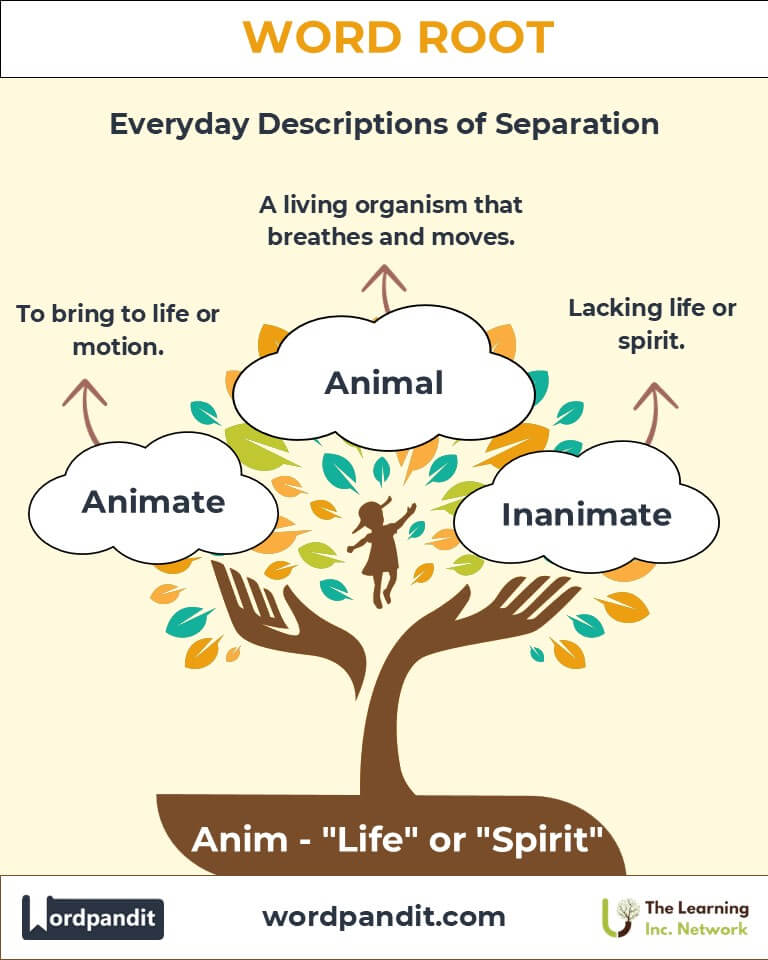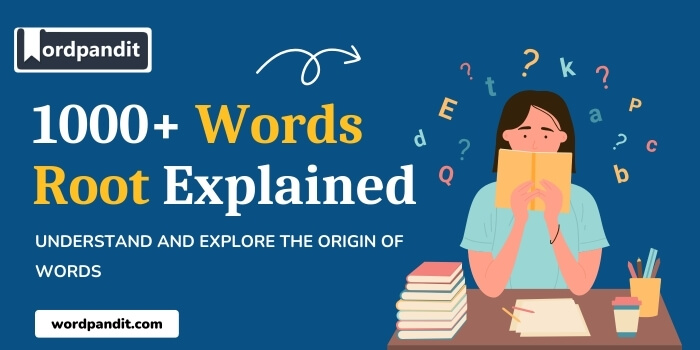Anim: The Spirit of Life in Language and Thought
Dive into the essence of the root "anim," derived from Latin, meaning "life" or "spirit." From the vibrancy of "animal" to the creativity of "animate," this root forms the heartbeat of words that celebrate vitality, energy, and consciousness in language, science, and art.

Table of Contents
- Introduction: The Essence of "Anim"
- Etymology and Historical Journey
- Mnemonic: Unlocking the Power of "Anim"
- Common Anim-Related Terms
- Anim Through Time
- Anim in Specialized Fields
- Illustrative Story: "Anim" in Action
- Cultural Significance of the Anim Root
- The Anim Family Tree
- FAQs about the Anim Word Root
- Test Your Knowledge: Anim Mastery Quiz
- Conclusion: The Living Legacy of Anim
Introduction: The Essence of "Anim"
What do a lively animal, a moving animation, and a spirited conversation have in common? They all share the root "anim," pronounced as AN-uhm or AH-nim, which means "life" or "spirit" in Latin. This versatile root forms the foundation of words that celebrate movement, vitality, and soul. Whether in literature, biology, or philosophy, "anim" symbolizes the energetic essence of life itself.
Etymology and Historical Journey
The root "anim" originates from the Latin word anima, meaning "soul," "spirit," or "breath of life." Ancient Romans associated anima with the vital force that animates living beings. Over time, this concept permeated various languages, giving rise to terms like "animal," representing living creatures, and "animate," referring to bringing something to life. Philosophers like Aristotle and Aquinas debated anima as the essence of existence, solidifying its importance in intellectual traditions.
Mnemonic: Unlocking the Power of "Anim"
Picture a glowing flame, flickering with energy and life. Just as the flame breathes and dances, "anim" represents the life force that animates all things.
Mnemonic Device: “Anim is the spirit within—bringing life, breath, and movement to everything.”
Common Anim-Related Terms
- Animal (AN-uh-muhl):
A living organism that breathes and moves.
Example: "The savanna teems with animals, each part of a thriving ecosystem."
- Animate (AN-uh-mayt):
To bring to life or motion.
Example: "The storyteller’s voice animated the characters, making them leap off the page."
- Inanimate (in-AN-uh-mit):
Lacking life or spirit.
Example: "The sculpture, though inanimate, seemed almost alive under the moonlight."
- Magnanimous (mag-NAN-uh-muhs):
Showing a generous and noble spirit.
Example: "She was magnanimous in victory, praising her competitors."
- Unanimous (yoo-NAN-uh-muhs):
Fully in agreement or of one spirit.
Example: "The council was unanimous in their decision to protect the forest."
Anim Through Time
- Animal (Ancient Latin to Modern):
Early usage in Latin focused on beings with a soul or breath (animalis). Over centuries, its meaning narrowed to refer to non-human living beings.
- Animate (Medieval to Present):
Originally tied to granting life, the term expanded with technological advancements to describe motion in film and digital art.
Anim in Specialized Fields
- Biology:
Animalia: The kingdom encompassing all animals, highlighting life’s diversity.
Example: "The Animalia kingdom includes creatures from insects to mammals."
- Philosophy:
Anima Mundi: A concept meaning "world soul," representing a universal spirit connecting all life.
Example: "Ancient philosophers believed in the anima mundi as a unifying force."
- Animation (Media and Arts):
The process of bringing still images to life through motion.
Example: "The animation industry has revolutionized storytelling in film and gaming."
Illustrative Story: "Anim" in Action
In a bustling village, an artist named Lia found inspiration in nature. As she painted, her mentor reminded her of anima, the spirit of life in all things. Lia's work became so vibrant that villagers swore her animals leapt from the canvas. Her story, blending creativity and vitality, showed how "anim" drives art, imagination, and connection.
Cultural Significance of the Anim Root
"Anim" resonates deeply in cultural expressions of vitality and spirit. From literary portrayals of magnanimous heroes to spiritual beliefs in an anima mundi, this root connects us to life’s essence. Animated films like Disney classics and philosophical discourses on the soul both underscore "anim's" cultural relevance.
The Anim Family Tree
Explore related roots and terms:
- Anima (Latin: "soul, life"):
Examples: Animate, inanimate.
- Animus (Latin: "mind, spirit"):
Examples: Animosity (hostility), magnanimous (great spirit).
- Psyche (Greek: "soul, breath"):
Examples: Psychology, psychic.
- Bio (Greek: "life"):
Examples: Biology, biography.
FAQs About the "Anim" Root
Q: What does "anim" mean, and where does it come from?
A: "Anim" means "life" or "spirit" and originates from the Latin anima, which signifies the breath of life or soul. This concept was central in ancient philosophies, where the soul or spirit was considered the essence of being alive.
Q: What is the difference between "anima" and "animus"?
A: Anima refers to the life force or soul that animates living beings. In contrast, animus often represents the mind, emotions, or intention. For example, animus might describe hostility or strong emotions, whereas anima is more about the essence of life.
Q: How is the word "animate" used in modern contexts?
A: While "animate" originally meant "to bring to life," today it is frequently used in media and arts to describe the creation of motion in still images, as seen in animated films. It also metaphorically applies to adding energy or enthusiasm to something, like "She animated the meeting with her lively ideas."
Q: What does "magnanimous" signify in terms of character?
A: "Magnanimous" refers to a person who shows a noble and generous spirit, especially in forgiving others or acting selflessly. This reflects the root "anim" because it ties to a great spirit or expansive vitality.
Q: Why is "inanimate" considered the opposite of "animate"?
A: "Inanimate" means lacking life or motion, directly opposing the life-giving or moving quality suggested by "animate." For instance, rocks or furniture are inanimate objects because they do not possess a life force.
Q: How does "anim" relate to concepts of spirituality?
A: The root connects deeply to spirituality through terms like anima mundi, meaning "world soul." This ancient concept represents the idea that the Earth and the universe are alive and interconnected by a single, vital spirit.
Q: What does "unanimous" imply about agreement?
A: "Unanimous" literally means "one spirit." It implies that all parties involved are in complete agreement, demonstrating harmony and unity in decision-making or opinion.
Test Your Knowledge: Anim Mastery Quiz
1. What does the root "anim" signify?
2. Which word means "to bring to life"?
3. What does "magnanimous" describe?
4. Which term means "lacking life"?
5. What is the origin of "anim"?
Conclusion: The Living Legacy of Anim
The root "anim" breathes vitality into our language and culture, connecting the life force of animals, the creativity of animation, and the nobility of magnanimity. As we continue to explore and innovate, "anim" reminds us of the spirited essence at the heart of all living things. Embrace the life force within and let "anim" guide your journey through words and ideas!












Thanks